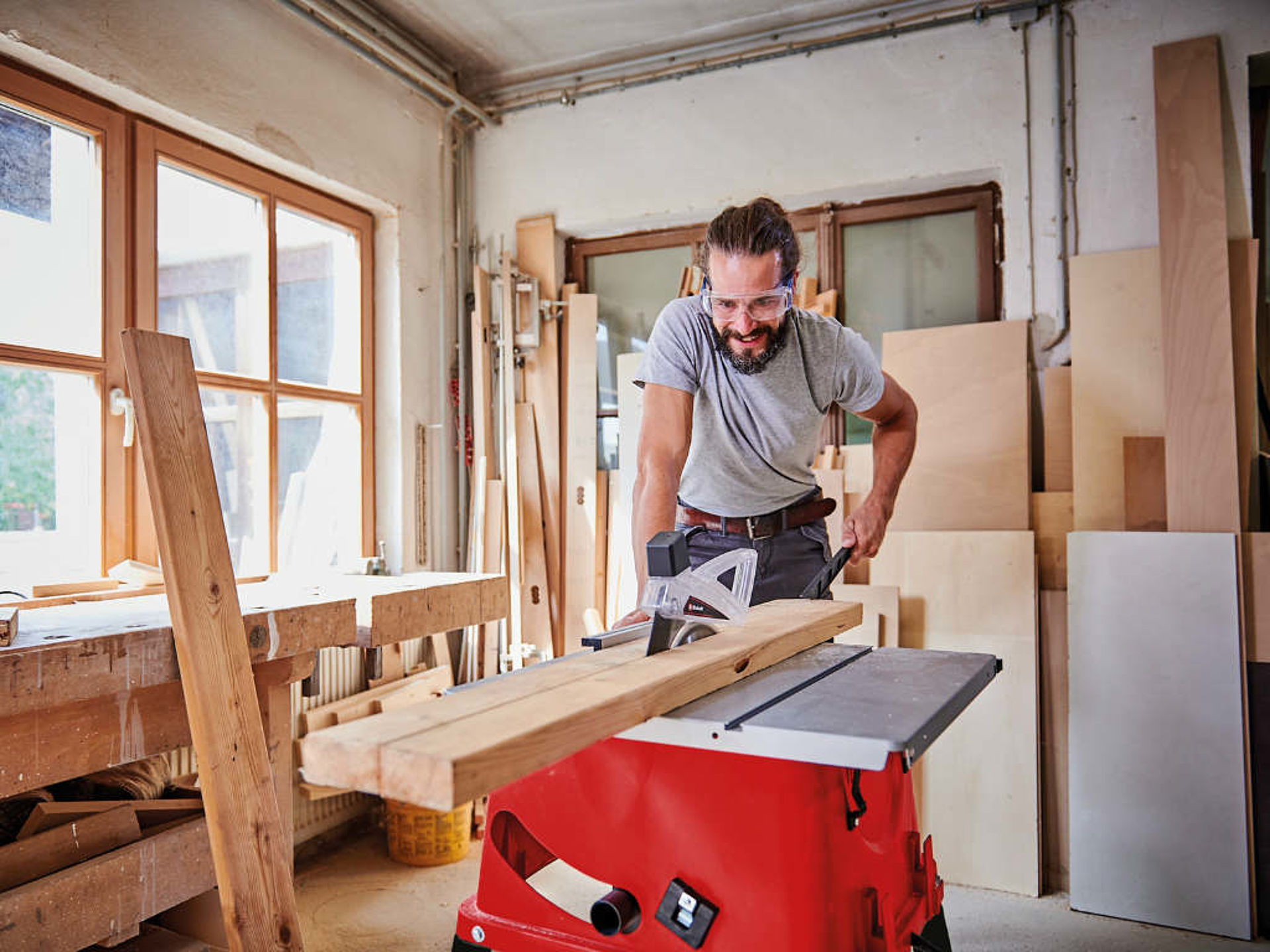The Table Saw - We Are Glad to Help
Every handyman who has one and doesn't have to deal with inaccurate or even risky compromise solutions for certain jobs can count themselves lucky. It occupies a central place in most hobby workshops and is often the showpiece of the machine park. But a table saw is irreplaceable not only to build beautiful furniture. For what and why you should have a table saw you can find out here:
Why Do I Need a Table Saw?
As soon as the cutting width has been reached with a crosscut and miter saw, the end is over! The table saw will here appear on the plan at the latest. With it, precise longitudinal cuts are not child's play, but they are much easier and faster to accomplish than with a jigsaw or hand held circular saw.
What Types Are There?


There is the so-called construction circular saw. She convinces with a robust appearance and in summer you like to see her hanging on the cranes of the construction sites. They are heavily motorized and usually offer large saw blade diameters.
There is a sliding table saw among the professionals. It is indispensable in joinery and is usually characterized by maximum precision. Here too, the engine power is enormous and the saw blades that can be used are very diverse.
The table saw is the most common variant in do-it-yourself circles. It is usually adjustable both in the saw blade height and in the inclination of the saw blade.
The respective variations of the saws mentioned are innumerable, as is the corresponding price range.
What Needs to Be Considered When Buying?
As with any tool, there is always the question at the beginning: "For what and how often do I want to use the tool?"
Entry-level saws for example to shorten a floor board can be purchased for less than € 100. But if you want to add a cupboard to put it on, an investment in the 3-digit range is highly recommended to avoid trouble. The price differences are then reflected in some cases on the processing quality and the performance of the saw. If the rip fence, i.e. the rail that runs parallel to the saw blade, is too unstable, the cuts are rarely as accurate as needed and frustration quickly arises! The differences in the materials used for the saw tables are just as great. An aluminum saw table is usually more robust than a sheet metal table that gives way under load. A stable substructure, which does not twist too easily, is just as important here. A roof batten or a laminate board for sawing does not demand top performance from any engine. A kitchen worktop with a thickness of 22 mm brings a small circular saw motor to its limits.
All of these aspects and components are included in the price and want to be paid for.
If you have decided to buy a table saw, you should pay attention to the following points to enjoy working for a long time!

- How exact do my cuts have to be?
Here you should pay attention to the design of the rip fence and the setting options of the saw blade.
- What material do I want to cut and how thick is the material?
This decides, on the one hand, about the size of the saw blades that can be used and the performance that the motor is capable of performing.
- How does dust extraction work?
- What diameter can I connect to the suction?
- Does my vacuum cleaner fit?
- What material is the saw table made of and how big is it? Is it made of cast iron, sheet metal or aluminum?
Here, the heavier the more expensive and usually also the more precise and the larger the table, the larger the workpiece support and the easier it is to handle large workpieces.
- What operating voltage do I need?
The more power the saw has, the more tension it needs. Firewood saws often work with a high-voltage connection. The ordinary DIY saw is equipped with a 230 V connection.
Safety with the Circular Saw!

In addition, you should ask yourself important questions about safety:
- How secure is the device standing?
If the frame on which the saw is mounted is already shaking, precise and safe work is almost impossible.
- How are the attachments parts processed?
If the rip fence wobbles back and forth despite locking, the cuts cannot be exact. In addition, a workpiece that jams with one of the saw teeth builds up uncanny forces that cannot be held with bare hands. A so-called kickback, i.e. shooting back the workpiece, would be the most dangerous consequence.
- Are the accessories that are part of the safety equipment of a saw completely and well made?
Saw blade cover, riving knife and push stick are standard accessories, these are supplied with every reasonable table saw. They have to be mounted well and securely and usually give a first impression of the workmanship of the entire saw.
- Is the saw table big enough and well processed?
If there are grooves for accessories in the saw table, they must run parallel to the saw blade. The more precise the better. The table should also have a straight stand and be even. If table extensions are additionally attached to the sides or behind the saw blade, make sure that there are no angular transitions.


